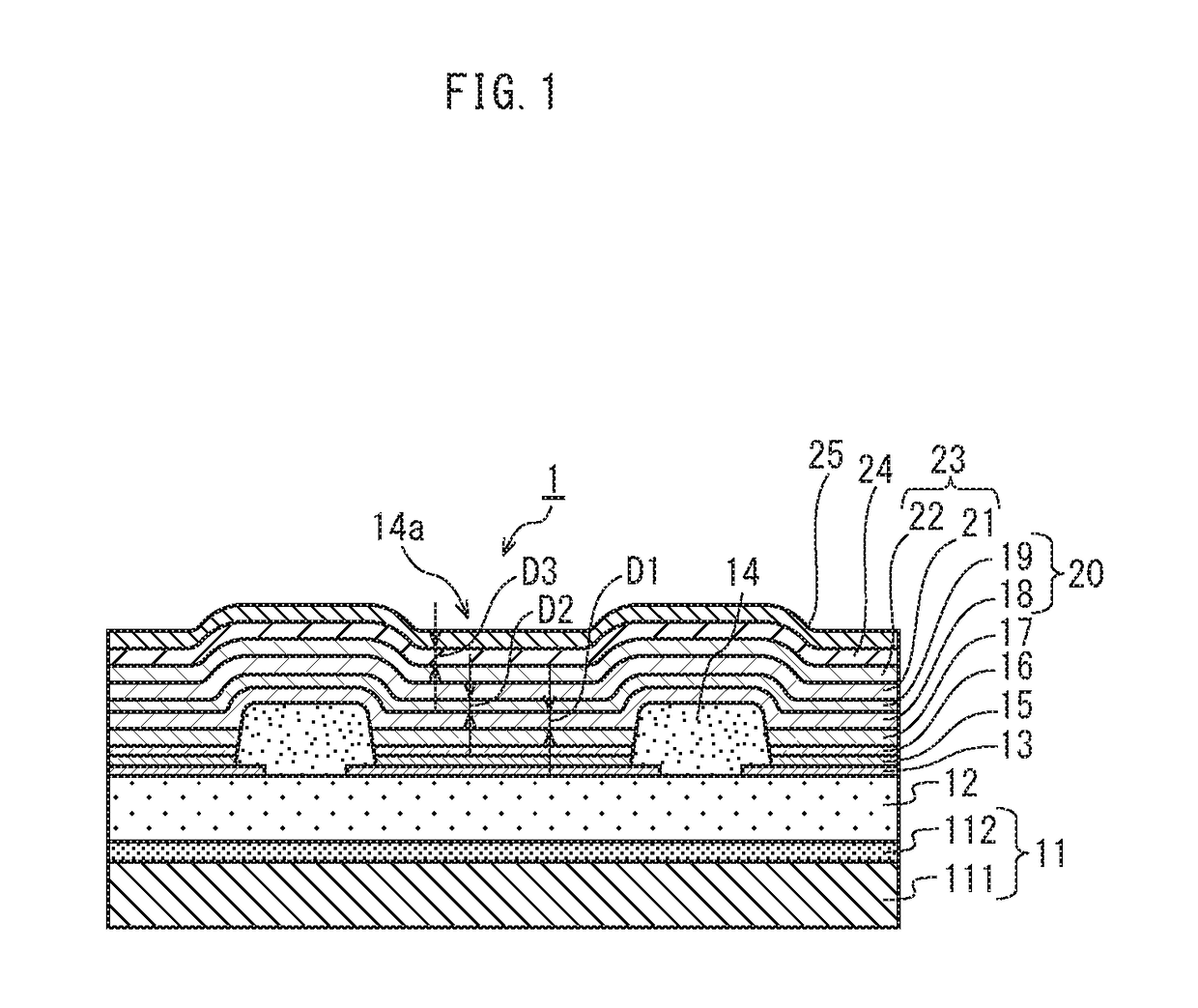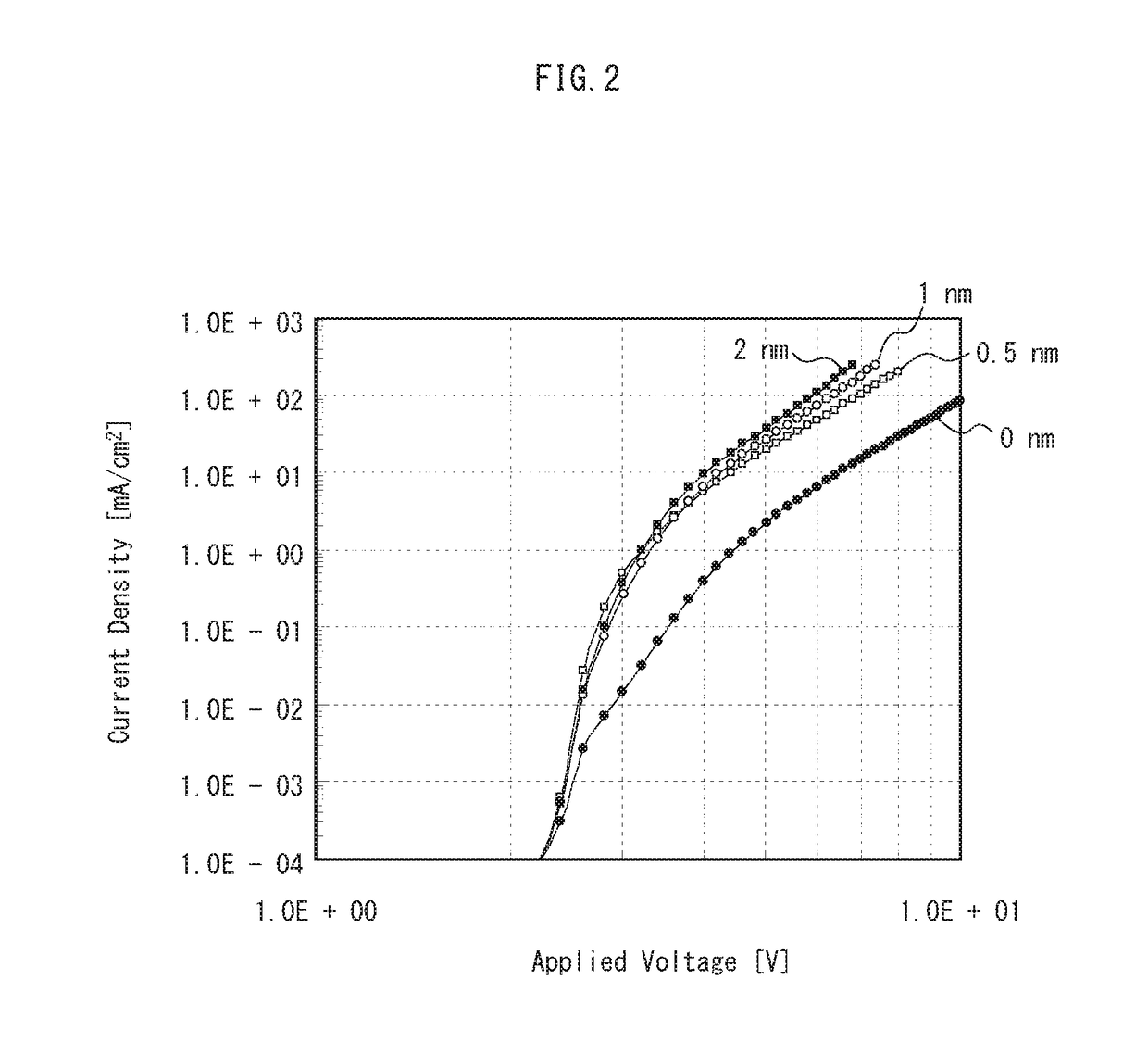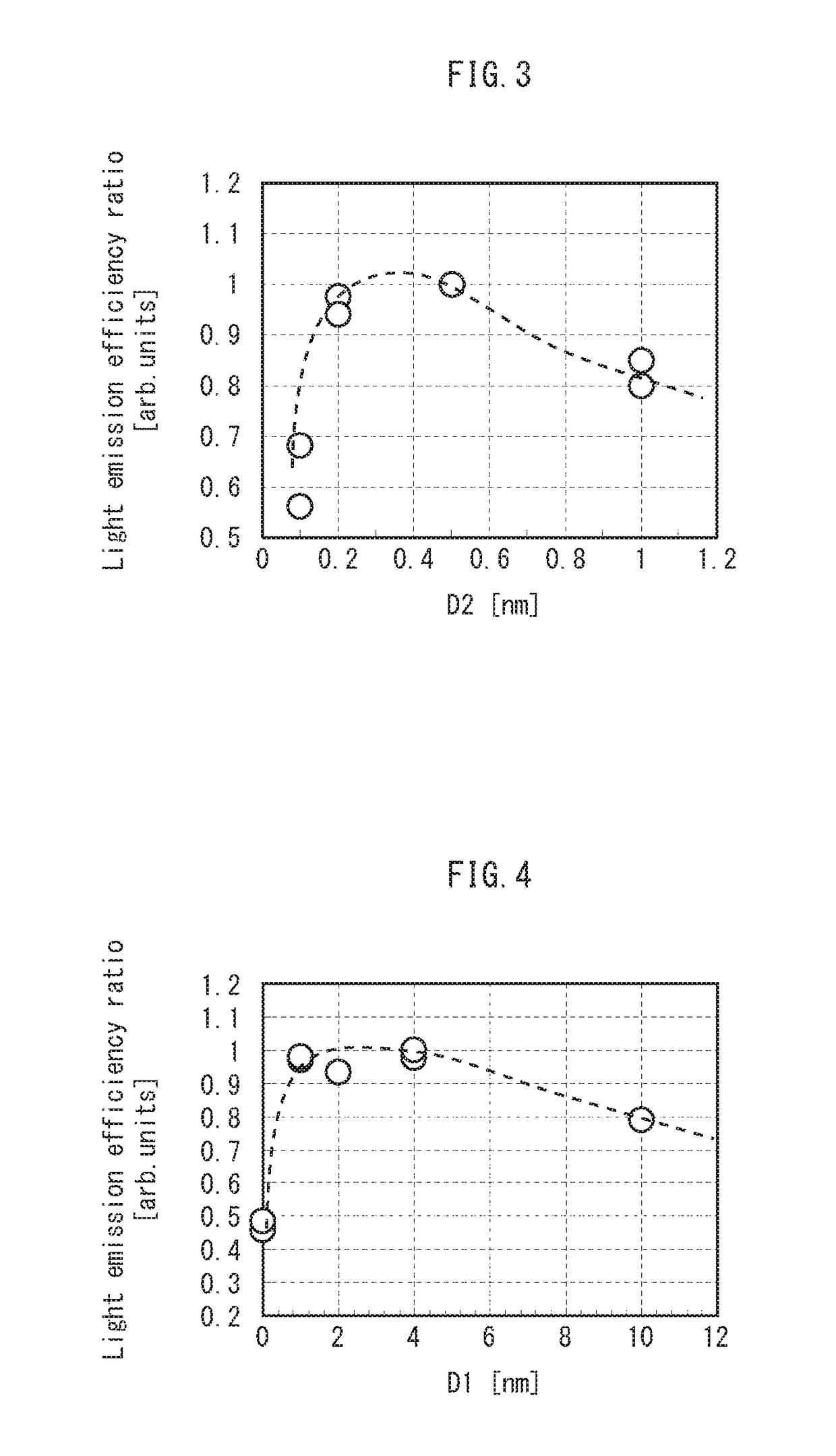Organic EL element comprising first and second interlayers of specified materials and thicknesses, and method for manufacturing thereof
a technology of organic el elements and interlayers, which is applied in the field of organic electroluminescence elements and methods for manufacturing organic el elements, can solve the problems of reduced light emission lifetime, degradation of light emission efficiency, and degradation of storage stability, so as to reduce cathode degradation, maintain excellent light emission properties, and work low
- Summary
- Abstract
- Description
- Claims
- Application Information
AI Technical Summary
Benefits of technology
Problems solved by technology
Method used
Image
Examples
embodiment summary
[Embodiment Summary]
[0163]According to the organic EL element 1 pertaining to the embodiment of the present invention described above, the first interlayer 18 prevents intrusion of impurities from the light-emitting layer 17 into the second interlayer 19 and the cathode thin film layer 21. In addition, the second interlayer 19 promotes electron injection from the cathode 23 to the light-emitting layer 17. This exhibits excellent light emission properties. Furthermore, the sorption layer 24 blocks intrusion of impurities from the sealing layer 25 to the second interlayer 19 and the cathode thin film layer 21, exhibiting excellent light-emitting properties.
[0164]Further, the thickness D1 of the first interlayer 18 and the thickness D2 of the second interlayer 19 satisfy 5%≤D2 / D1≤25%. This exhibits an excellent light emission efficiency.
[0165]Moreover, since the thickness of the sorption layer 24 is 12 nm or less, a low amount of light absorbed by the sorption layer 24 is achieved and ...
modification 1
(Modification 1)
[0168]According to the above embodiment, the explanation has been given on the example in which the organic EL element 1 includes the cathode auxiliary layer 22. However, this is just an example. The organic EL element 1 may be configured without the cathode auxiliary layer 22. In this case, impurities intruding from the sealing layer 25 are taken up and held by the sorption layer 24, and therefore degradation of the cathode thin film layer 21 by impurities is suppressed more than a case in which the sorption layer 24 is not provided.
[0169]Further, even when the cathode auxiliary layer 22 is not provided, diffusion of the third metal from the sorption layer 24 is suppressed by the cathode thin film layer 21.
modification 2
(Modification 2)
[0170]According to the above embodiment, an explanation has been given on the example in which the organic EL element 1 includes the hole injection layer 15 and the hole transport layer 16. However, this is just an example. Alternatively, the organic EL element 1 need not include at least one or all of these layers.
PUM
 Login to View More
Login to View More Abstract
Description
Claims
Application Information
 Login to View More
Login to View More - R&D
- Intellectual Property
- Life Sciences
- Materials
- Tech Scout
- Unparalleled Data Quality
- Higher Quality Content
- 60% Fewer Hallucinations
Browse by: Latest US Patents, China's latest patents, Technical Efficacy Thesaurus, Application Domain, Technology Topic, Popular Technical Reports.
© 2025 PatSnap. All rights reserved.Legal|Privacy policy|Modern Slavery Act Transparency Statement|Sitemap|About US| Contact US: help@patsnap.com



